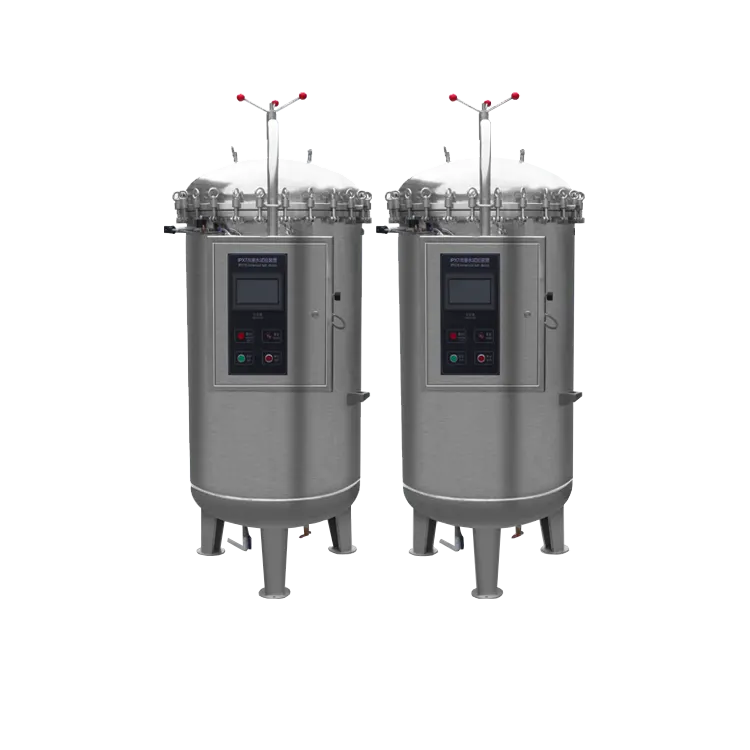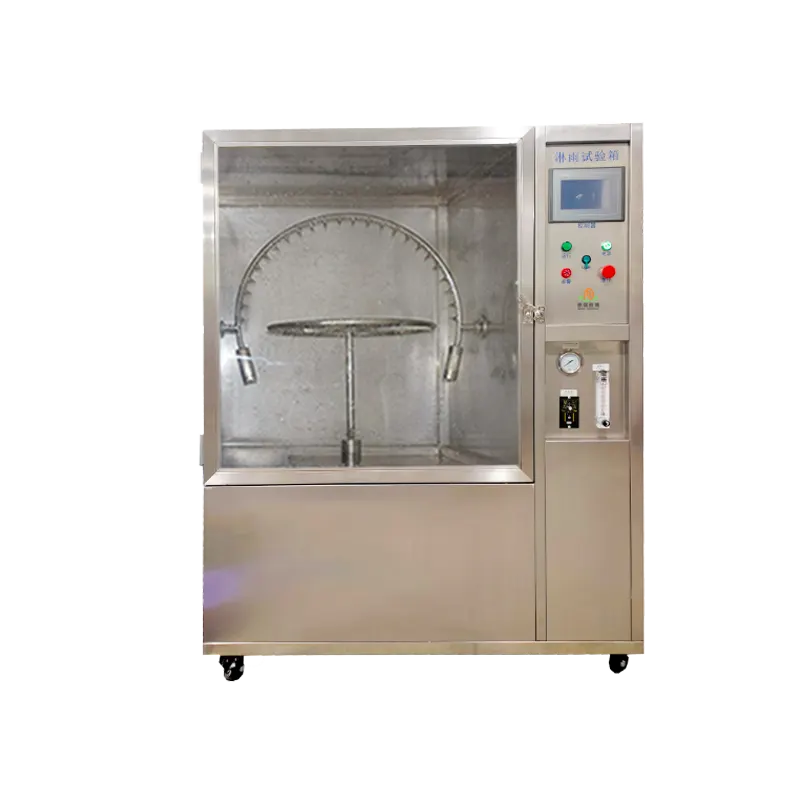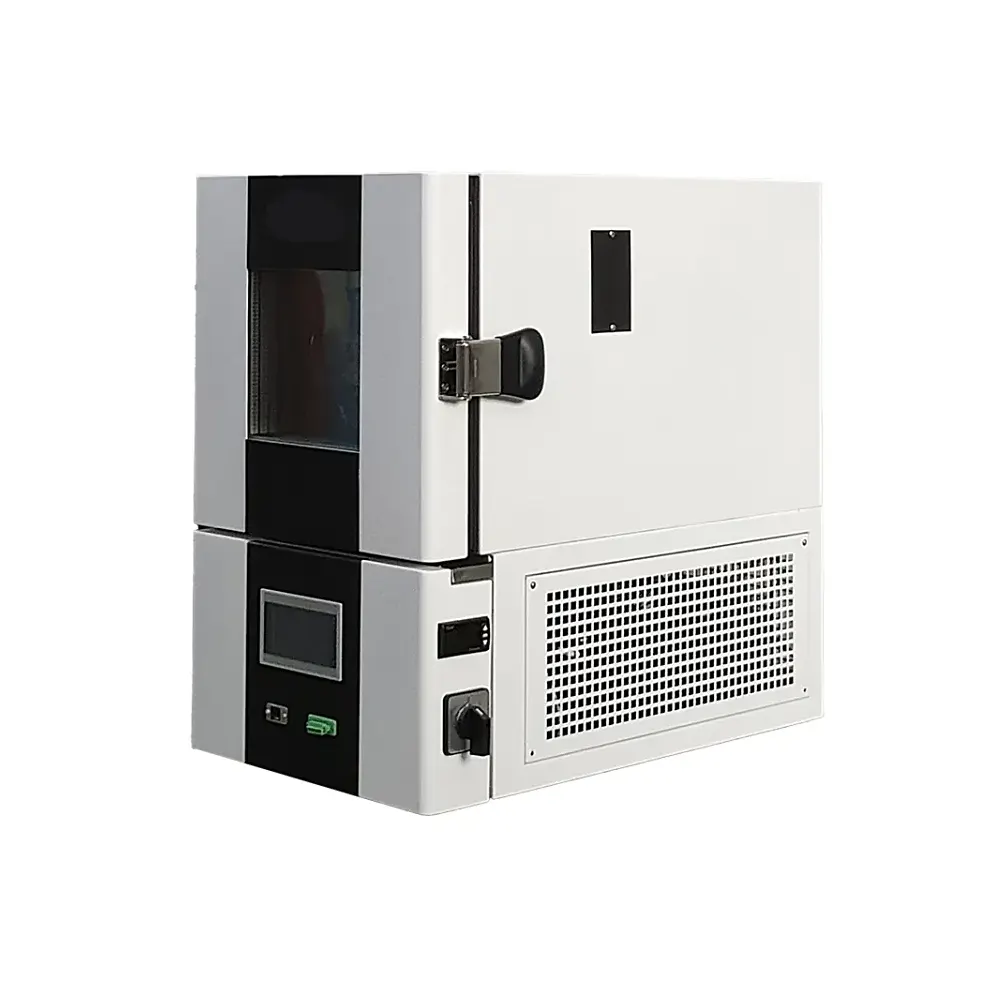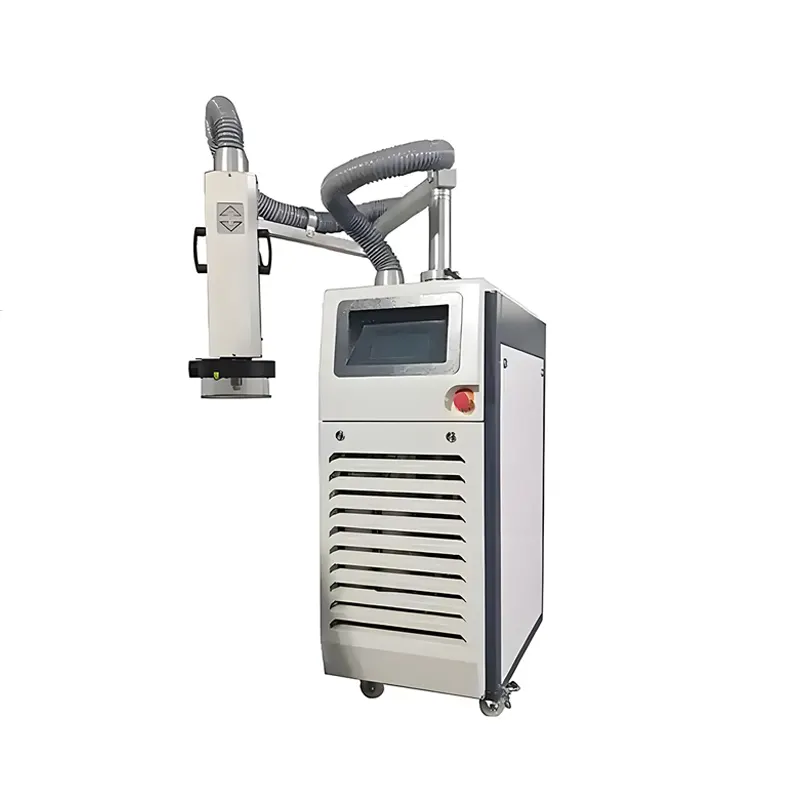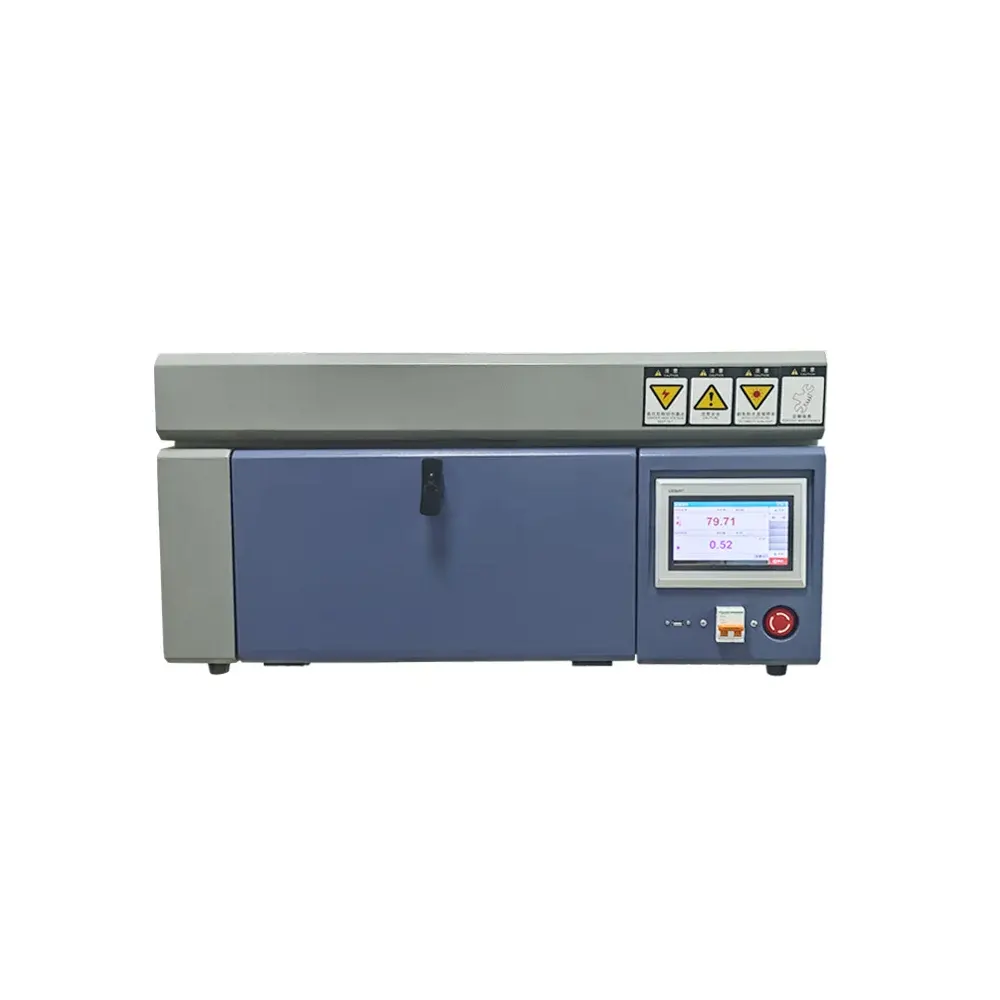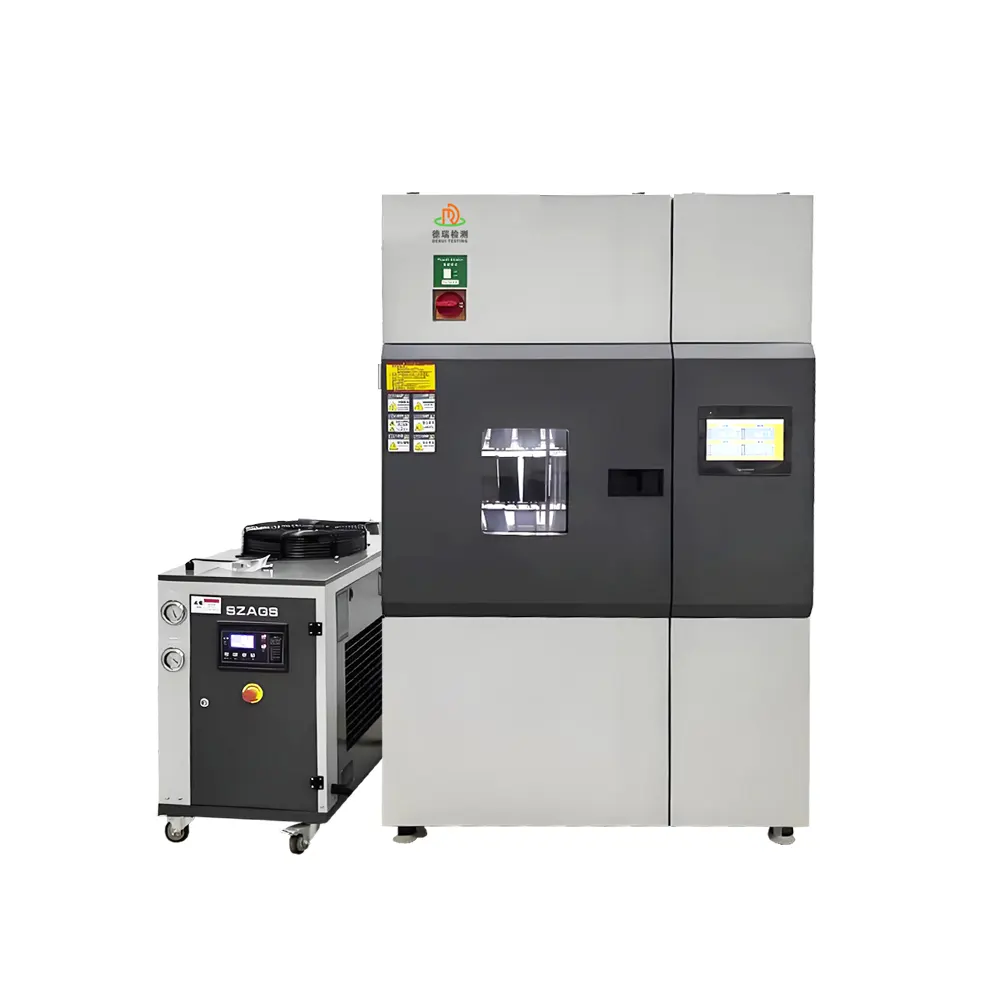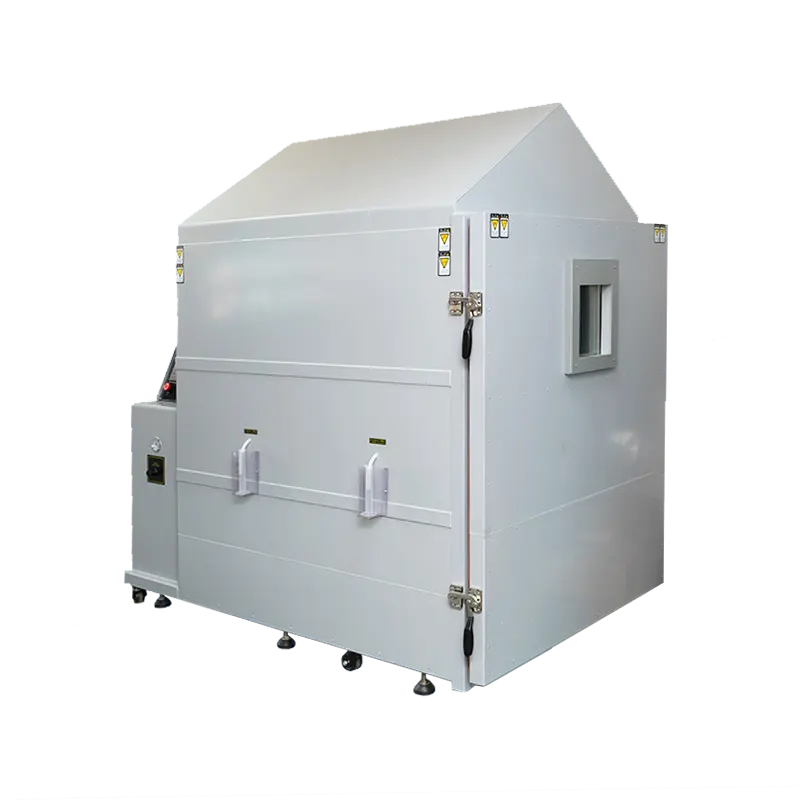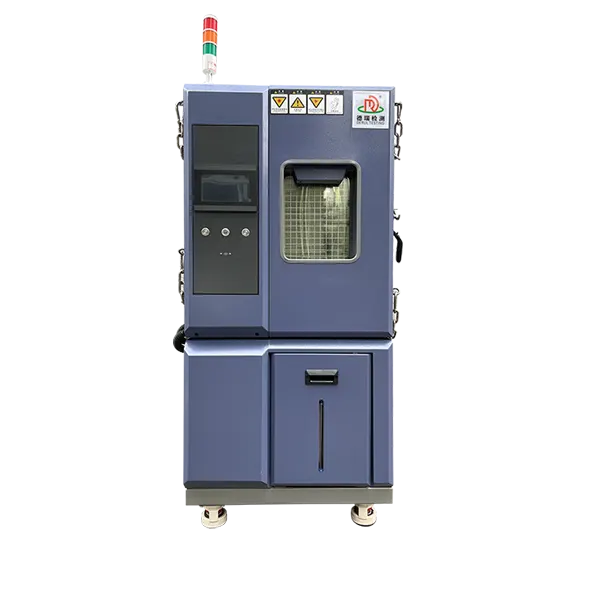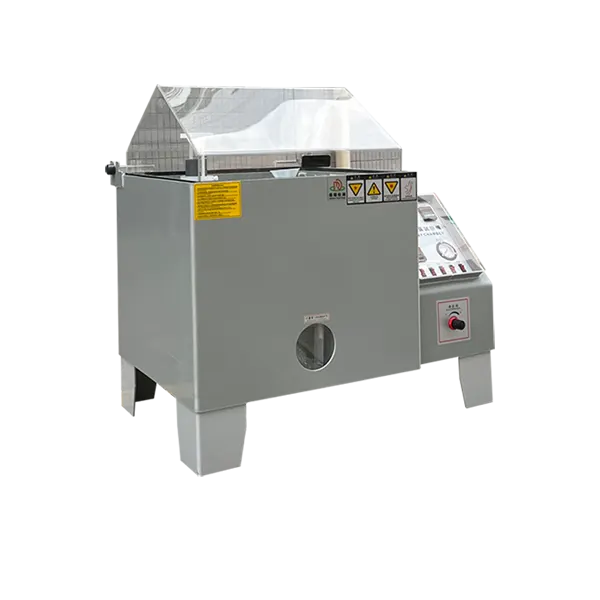160 Salt fog test chamber: The working chamber size is 160x100x50 cm,The salt spray test chamber is a testing device that artificially simulates a salt spray environment. It is mainly used to assess the salt spray corrosion resistance of materials and their protective coatings, as well as to compare the process quality of similar protective coatings. At the same time, it can also evaluate the salt spray corrosion resistance of certain products. It is suitable for salt spray corrosion tests of components, electronic components, protective coatings of metal materials, and industrial products.
Structural Features of 160 Salt Spray Test Chamber
- Test Chamber: Constructed of 6mm thick grey PVC temperature-resistant and impact-resistant board, offering excellent corrosion and impact resistance.
- Constant Temperature Water Bath: Also made of 6mm thick grey PVC temperature-resistant and impact-resistant board. Equipped with an auto-fill function to eliminate the inconvenience of manual water addition.
- Test Chamber Cover: Made of 5mm thick transparent European-grade heat-resistant acrylic sheet, allowing easy observation of the test process.
- Chemical Replenishment Tank: Concealed design with a water level gauge. Constructed of 5mm thick grey PVC impact-resistant board, integrated seamlessly with the machine's exterior for convenient chemical addition.
- Test Chamber Basket Rack: Made of grey PVC temperature-resistant angle material. Freely adjustable to 15° or 30° angles to accommodate the placement requirements of different test specimens.
- Saturated Air Barrel: Constructed of 2mm thick stainless steel plate. Features an auto-fill function to eliminate manual water addition. Equipped with a graduated liquid-separation tube on the exterior to measure salt spray sedimentation rate.
Application Areas
- Electronics & Electrical Industry: Used to assess the reliability of electronic components, circuit boards, connectors, etc., in humid, salt-laden environments, ensuring product lifespan under harsh conditions.
- Automotive Industry: Used for corrosion testing of automotive parts such as body panels, engine components, fasteners, etc., to guarantee vehicle durability under varying climatic conditions.
- Aerospace: Tests the corrosion resistance and structural integrity of aerospace materials in extreme environments, ensuring the safety and reliability of aircraft.
- Shipbuilding & Marine Engineering: Evaluates the corrosion conditions of ship structures and marine engineering facilities, providing a basis for material selection and protective measures.
- Chemical Industry: Detects the corrosion resistance performance of chemical equipment, pipelines, valves, etc., in salt spray environments, providing safety assurance for chemical product production and storage.
Main types
- Standard salt spray test chamber: Usually made of PVC or fiberglass reinforced plastic (FRP), it can conduct neutral salt spray test (NSS), acetic acid salt spray test (ASS), etc.
- Cyclic salt spray test chamber: Generally made of FRP, in addition to the functions of standard salt spray test chambers, it can also perform drying, wet heat, constant temperature and humidity tests, simulating the corrosion conditions of auto parts and other products in different environments.
- Walk-in salt spray test chamber: Customizable, with materials such as FRP or stainless steel, suitable for salt spray tests of large samples or batch samples.
Test Standards
- ISO 9227-2022: An internationally recognized standard, it specifies three test methods: neutral salt spray (NSS), acetic acid salt spray (AASS), and copper-accelerated acetic acid salt spray (CASS).
- ASTM B117-2009: A standard of the American Society for Testing and Materials, it is applicable to neutral salt spray tests, with a test temperature of 35 ± 1.1°C and a spray pressure of 0.7 - 1.4 bar.
- GMW14872: A General Motors standard, it supports anhydrous heated salt spray tests, with a temperature range up to 70°C, and is suitable for cyclic corrosion tests (CCT), simulating alternating dry and wet environments.
The lifespan of a salt spray test chamber is generally between 2 to 10 years, and the specific duration is influenced by several factors. Here’s a detailed analysis:
Key Factors Affecting Lifespan
- Equipment Quality
- High-quality salt spray chambers, made from premium materials and advanced manufacturing techniques, feature robust structures and stable performance. These can last 8–10 years or longer.
- Lower-quality equipment may develop faults after 2–3 years, compromising functionality.
- Usage Frequency
- Frequent daily operation accelerates wear on components (e.g., spray system, heating elements, controls), potentially shortening lifespan to 3–5 years.
- Light usage (e.g., 1–2 times weekly for short durations) reduces wear, extending service life to 6–10 years.
- Maintenance & Care
- Regular maintenance—such as cleaning the chamber, replacing water/lubricants, and inspecting nozzles/valves—prevents issues and extends lifespan to 5–8+ years.
- Neglecting maintenance often leads to malfunctions, reducing lifespan to 2–4 years.
- Operating Environment
- Chambers placed in dry, ventilated, corrosion-free areas (away from sunlight/rain) last longer.
- Harsh environments (e.g., humidity, dust, corrosive gases) accelerate corrosion/damage, cutting lifespan to 3–5 years.




